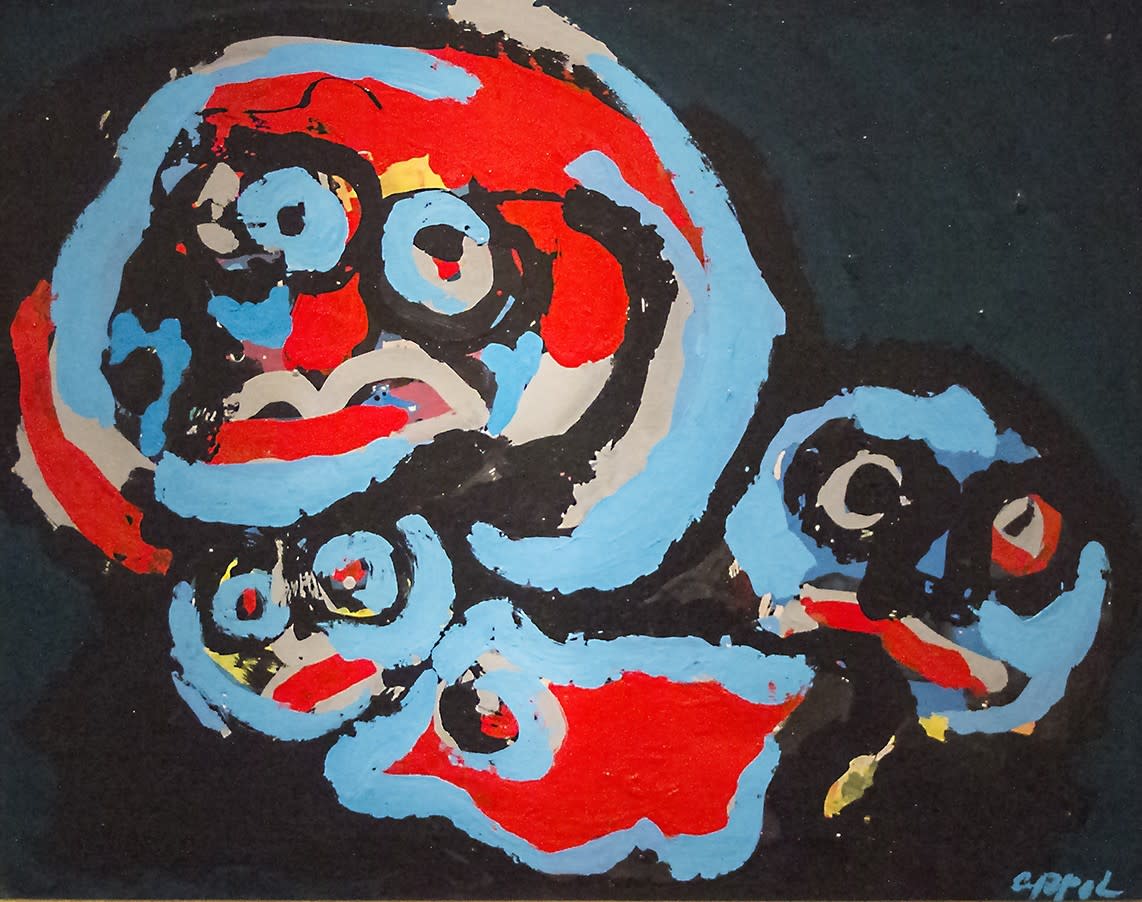artist
Christiaan Karel Appel was born on April 25, 1921 in his parents' house at Dapperstraat 7 in Amsterdam, The Netherlands. Appel's father ran his barber shop business out of the first floor of this very same house. His mother Johanna Chevalier was a descendant of wealthy French Huguenots. When he turned fourteen, Appel produced his first painting which was a fruit basket still life. On the occasion of his fifteenth birthday Appel's wealthy uncle Karel Chevalier presented him with an easel and paint set as well as some painting lessons. During the Second World War from 1940 until 1943 Appel enrolled at the Rijksakademie van Beeldende Kunsten. In 1946 he held his first show in Groningen, the largest city in Northern Netherlands.
Appel's art at this time was heavily influenced by the works of Pablo Picasso, Henri Matisse and Jean Dubuffet. Appel first aligned himself with the Nederlandse Experimentele Groep. Then he helped to establish the CoBrA (Copenhagen, Brussels, and Amsterdam) Group in 1948 along with fellow artists Corneille, Constant, Asger Jorn, Pierre Alchinsky, and Jan Nieuwenhuys in reaction to the "action painters" of the New York School of Abstract Painting. Their aim was to elevate instinct in the creation of art and to oppose all intellectual approaches to art. At this time Appel also began to make artworks from junk - assemblages he called poubelles ("dustbins"). In 1949 Appel created a controversial fresco of children for the Amsterdam City Hall. Depending on how the title "Vragende Kinderen" was translated, the title could either be translated as "questioning children" or "begging children". The result was that the work caused a huge uproar. The artist had sought to create a new openness, but the Dutch civil servants could only see violence of which they had experienced too much in the recently ended past war. As a result the mural was quickly whitewashed over, a state in which it remained for the following twenty years. Appel was furious at what he saw as rejection and censorship and decamped to France where he lived in a ruined castle in Auxerre.
After about 1950 Appel began to concentrate on creating sculpture. He designed large scale wooden reliefs of which his "Appel Circus" works (1976-1978) are the most memorable. He later replaced the wood medium for colored polyester and then later aluminum. In the early 1980s, Appel and the poet Allen Ginsburg collaborated on a series of visual poems. The two men bonded over a mutual love of jazz. In the early 1990s, Appel began to paint opera sets and Tuscan landscapes. He was awarded the 27th International Biennale's UNESCO Prize in Venice in 1954 and the First Prize at the Guggenheim International Exhibition in New York in 1960. Appel died on May 3, 2006 at his home in Zurich, Switzerland from a heart ailment and was buried in Père Lachaise Cemetery in Paris, France. In addition to his large body of paintings, Appel will also be remembered for his prints, sculptures, graphics and illustrations, ceramics, as well as his large murals and large room decorations. Appel is often considered the leading figure in the modern generation of Dutch artists. He stands as the most important Dutch artist of the 20th century.
provenance
Brun Rasmussen Sept. 2015
*Niels Raben the expert at Brun Rasmussen confirmed provenance was checked and they stood behind authenticity. As well they collected an "Artist's Royalty" commission to extend back to the family on this lot.







